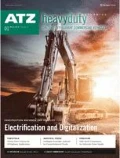Dear Reader,
The 67th IAA Commercial Vehicles will open its doors to the general public on September 20, 2018, in Hanover (Germany). This year, it will focus on the key topics of automated and connected driving, alternative powertrains, urban mobility, and last-mile logistics, as well as innovative services for mobility and transport. These future trends represent the transformation of an entire industry, and they are rapidly changing logistics, transportation, and mobility.
What is missing from this list, however, is the materials aspect, and in particular the impact of 3-D printing. This technology could enable the development of new, durable lightweight automotive design concepts. 3-D printing is already being intensively employed in other industrial sectors. According to a study by strategy consultants PwC Strategy&, the global market for 3-D printed products in industry will grow on average by between 13 and 23 % a year to reach a market size of 22.6 billion euros in 2030. The automotive industry as a driver of innovation is still very cautious in applying this technology: the market size in 2015 was a mere 0.26 billion euros. And the proportion in the commercial vehicle sector is low. In our interview on page 20, we therefore address the question of why 3-D printing is particularly interesting for commercial vehicle manufacturers.
Even if additive manufacturing is not one of the main topics of this year’s IAA Commercial Vehicles, visitors will have the chance to examine many exciting products and solutions. In addition to the topics mentioned above, new legislation on vehicle length will certainly also be a subject that permits additional aerodynamic measures and improved driver ergonomics. I am already looking forward to intensive discussions with the exhibitors.
Enjoy reading your ATZoffhighway.

Author information
Authors and Affiliations
About this article
Cite this article
Fuchs, A. Trends in Commercial Vehicles. ATZ offhighw worldw 11, 3 (2018). https://doi.org/10.1007/s41321-018-0036-9
Published:
Issue Date:
DOI: https://doi.org/10.1007/s41321-018-0036-9

